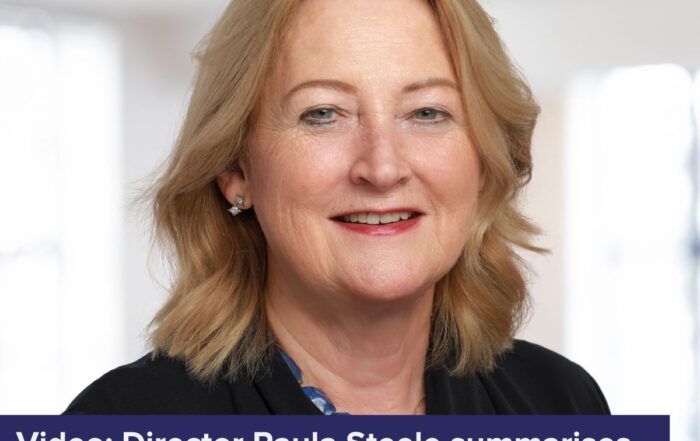How the pandemic has affected life insurance rates and what your clients need to know

The consequences of the pandemic have been widespread throughout society and the insurance industry has not been shielded from the effects.
Prior to the pandemic, insurance premiums were at historically low rates
Following the 2008 financial crisis the insurance market had excess capacity, one result of this meant that premiums did not rise in line with inflation.
According to Statista, in 2007 the UK market saw the value of total direct premiums peak at approximately 342 billion euros before sharply declining at the onset of the 2008 crisis to around 207 billion euros. The table below shows how the market remained largely deflated for the following decade:

Source: Statista
In 2019, after a year of poor results and diminishing returns within the industry, insurers began to increase premiums.
However, in 2020 the Covid pandemic caused widespread uncertainty across the sector, as providers rushed to catch up with the latest information on the virus and how it might affect policy holders in the long term.
This sense of doubt was also felt by prospective buyers with many individuals unsure of how Covid might affect their health in the long term. According to Finder, in the year following the start of the pandemic there was a:
- 1.5% decline in new life insurance policies taken out (down from 20.7 million to 20.4 million)
- three-year drop in individuals that were members of some form of group life insurance cover, declining from 11.6 million in 2018 to 10.4 million in 2021.
The pandemic resulted in large losses for providers due to the inevitable rise in pay outs.
The ABI reported in 2021 that insurers paid out £204 million from Covid related claims across life, critical illness and income protection insurance.
This has inevitably led to a situation where many providers are seeking to recoup some of these losses through increased premiums in the coming years.
The pandemic temporarily delayed the increase in premiums that began in 2019 but that is coming to an end
There are many factors that have caused market uncertainty over the course of the pandemic. One is the fact that the majority of Covid deaths have occurred among the elderly who were more likely to die regardless of the pandemic. That excess deaths in the UK currently sit at around 10% (about 1,000 a week,) which may or may not drop off in the near future.
The has led to a situation where rates are beginning to rise once more and are likely to rise significantly over the next few years.
Many people are mistakenly opting against taking out life insurance cover which could be costly in the long-term
According to the Actuarial Post, the main reasons individuals cited for not taking out life insurance were the unfounded beliefs that:
- they don’t need insurance as they have other investments in place (40%)
- it’s prohibitively expensive (39%)
- insurers never pay out on claims (12%).
According to Money Marketing, as of October 2022, only 35% of UK adults have life insurance cover with the majority of those without any insurance (63%) claiming they think it’s too expensive.
Many people also have incorrectly held beliefs regarding how Covid might affect their cover. These can range from believing that the vaccine voids their cover or that they are unable to get insurance if they have previously reported having the virus.
Being proactive and seeking professional advice can help your clients navigate the post-pandemic marketplace
The key changes your clients need to be aware of when seeking cover in the post-pandemic insurance marketplace are:
- new limits to the maximum amounts of cover available (maximum sum assured)
- the application process might now have questions directly relating to Covid-19
- the free underwriting limits have been lowered due to additional mortality risks
- added restrictions for certain medical conditions such as diabetes, heart disease, autoimmune illnesses, neurological conditions, and HIV.
It is important that your clients take a proactive approach to their protection plans, the cost of delay is often significant higher.
At John Lamb Hill Oldridge, our in-house underwriter will speed this step up.
It could be considerably beneficial for your clients’ long-term outlook to review any existing policy now and perhaps consider a short-term plan over two to five years that can be reviewed again in the near future once more data has emerged about the long-term implications of Covid-19.
Get in touch
Life insurance rates risen significantly to date but they are likely to in the near future. It is vital that your clients seek professional advice before making any key decisions about their cover.
Contact the team at John Lamb Hill Oldridge for further insights, either by email at [email protected] or by calling us on 020 7633 2222.
Please note
Note that life insurance plans typically have no cash in value at any time and cover will cease at the end of the term. If premiums stop, then cover will lapse.
This article is not a substitute for financial advice and should not be treated as such. To determine the best course of action for your individual circumstances, please contact us.
Other Insights
Arranging life insurance for a married couple to cover their £3 million inheritance tax liability
The clients, a married couple in their 60s, had three children in their 20s The couple had a £3 million inheritance tax (IHT) liablity They were seeking whole-of-life cover for their joint life IHT [...]
New pensions taxation rules
In this video, Director Paula Steele explains how the taxation of pensions could change from April 2027. Please click here to view the full video
Changes to IHT
In this video, John Lamb Hill Oldridge Director Paula Steele summarises the proposed changes to inheritance tax that were outlined in the Budget in October 2024. Please click here to watch the full video [...]


